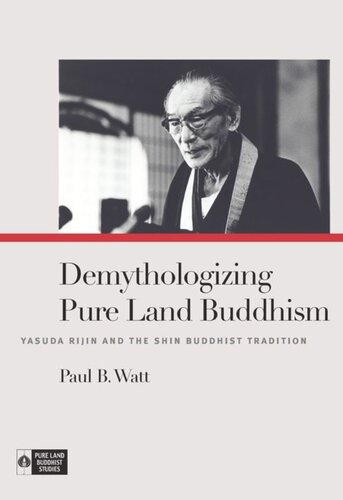

Most ebook files are in PDF format, so you can easily read them using various software such as Foxit Reader or directly on the Google Chrome browser.
Some ebook files are released by publishers in other formats such as .awz, .mobi, .epub, .fb2, etc. You may need to install specific software to read these formats on mobile/PC, such as Calibre.
Please read the tutorial at this link: https://ebookbell.com/faq
We offer FREE conversion to the popular formats you request; however, this may take some time. Therefore, right after payment, please email us, and we will try to provide the service as quickly as possible.
For some exceptional file formats or broken links (if any), please refrain from opening any disputes. Instead, email us first, and we will try to assist within a maximum of 6 hours.
EbookBell Team

4.3
88 reviewsThe True Pure Land sect of Japanese Buddhism, or Shin Buddhism, grew out of the teachings of Shinran (1173–1262), a Tendai-trained monk who came to doubt the efficacy of that tradition in what he viewed as a degenerate age. Shinran held that even those unable to fulfill the requirements of the traditional Buddhist path could attain enlightenment through the experience of shinjin, “the entrusting mind”—an expression of the profound realization that the Buddha Amida, who promises birth in his Pure Land to all who trust in him, was nothing other than the true basis of all existence and the sustaining nature of human beings. Over the centuries, the subtleties of Shinran’s teachings were often lost. Elaborate rituals developed to focus one’s mind at the moment of death so one might travel to the Pure Land unimpeded, and a rich artistic tradition celebrated the moment when Amida and his retinue of bodhisattvas welcome the dying believer. What is more, many Western interpreters tended to reinforce this view of Pure Land Buddhism, seeing in it certain parallels to Christianity.
This volume introduces the thought and selected writings of Yasuda Rijin (1900–1982), a modern Shin Buddhist thinker affiliated with the Otani, or Higashi Honganji, branch of Shin Buddhism. Yasuda sought to restate the teachings of Shinran within a modern tradition that began with the work of Kiyozawa Manshi (1863–1903) and extended through the writings of Yasuda’s teachers Kaneko Daiei (1881–1976) and Soga Ryōjin (1875–1971). These men lived through the period of Japan’s rapid modernization and viewed the Shin tradition as possessing existential significance for modern men and women. For them, and Yasuda in particular, Amida did not exist in some other-worldly paradise but rather Amida and his Pure Land were to be experienced as lived realities in the present. In the writings and lectures presented here, Yasuda draws on not only classical Shin and Mahayana Buddhist sources, but also the thought of Nishida Kitarō (1870–1945), the founder of the Kyoto School of philosophy, and modern Western philosophers such as Heidegger, Nietzsche, and Buber.